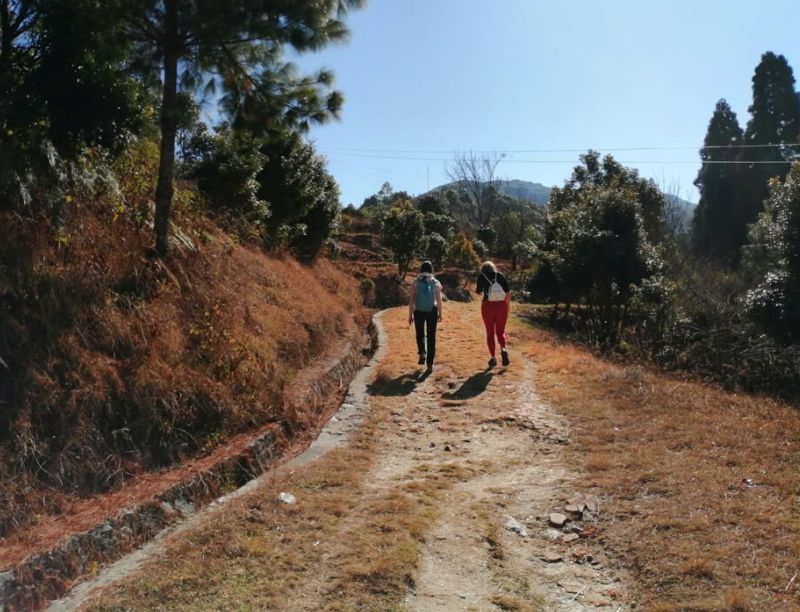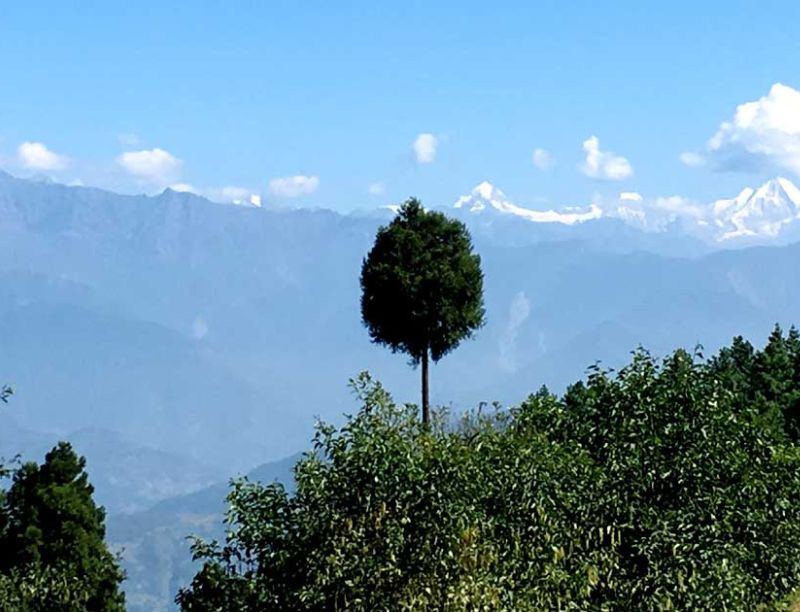Introduction
Kakani is one of the most visited places near Kathmandu. Kakani offers breathtaking views of the mountain ranges. This area near Shivapuri National Park is naturally gifted with waterfalls, streams, and lush green forests. Kakani is a popular hiking choice among youths. With gradual ascents and descents throughout the trail, hiking to Kakani is not very difficult. At an altitude of 2070 meters, Kakani is a famous viewpoint from which to witness sunrise.
In this article, let’s explore the trail from Kathmandu to Kakani.
Getting Started: Preparing for the Hike
Before embarking on the Kakani hike, it’s essential to prepare adequately. The hike, while moderately strenuous, requires a reasonable fitness level. Here are a few things to consider:
- Fitness Level: With a moderate fitness level, you can easily complete this hike. It takes less than 4-5 hours to complete, so you can leisurely complete it.
- What to Pack: Be smart while you pack your bag. Do not carry items that will weigh you down. Carry plenty of water, protein-rich foods, and minimal clothes for the hike.
- Permits and Entry Fees: You must pay the entry fee at the Nagarjun Forest Reserve gate, which is minimal. You won’t need any special permits to hike in this area.
- Transportation to the Starting Point: Getting to the hike’s starting point is easy, as you can find many public vehicles that will drop you near the forest reserve.
Also Read: Chisapani-Nagarkot Hike: A Beautiful Trek Near to Kathmandu
The Route: A Step-by-Step Journey
The hiking route to Kakani is easy, making it accessible for experienced and inexperienced trekkers. The journey begins from Kathmandu, where you can either take a short drive to the starting point at Kakani or hike from the city, which takes approximately 5-6 hours.

Starting Point: Kathmandu (Balaju)
The hike begins at Balaju, a bustling area just outside the main city center of Kathmandu. From here, you will start your ascent towards Kakani. The trail winds through scenic landscapes, including lush forests, terraced fields, and small villages.
First Stop: Ranipauwa
As you ascend, the first major landmark you’ll encounter is Ranipauwa. This small village offers a glimpse into the rural life of Nepal. The local tea shops here are perfect for a short break, where you can enjoy a cup of tea while enjoying the views.
The Forest Trail
After Ranipauwa, the trail becomes more forested. This section is lovely, with tall pine trees lining the path. The pine scent fills the air, making this part of the hike incredibly refreshing.
Midway Point: Okharpauwa
Continuing through the forest, you’ll reach Okharpauwa, a small settlement that serves as a halfway point to Kakani. Here, you can take a longer break, have snacks, and chat with the locals. The views from Okharpauwa are already impressive, but they only get better as you continue your ascent.
Final Stretch: Okharpauwa to Kakani
The final stretch of the hike is a steady climb towards Kakani. As you approach the hill station, the views reveal the stunning panorama of the Himalayan ranges, including peaks like Ganesh Himal, Langtang, and Manaslu.
Destination: Kakani
Kakani is a peaceful hill station renowned for its breathtaking views and serene environment. Upon reaching Kakani, you’ll be greeted by a spectacular view of the snow-capped Himalayan peaks. The viewpoint at Kakani is the perfect spot to rest, enjoy your packed lunch, and enjoy the natural beauty surrounding you.

Things to Do in Kakani
- Visit the Thai Memorial Park: Built in memory of the 1992 Thai Airways crash victims, this park offers a quiet place for reflection and excellent mountain views.
- Explore the Local Area: Kakani is surrounded by beautiful forests and terraced fields. A short walk around the area will allow you to see more local flora and fauna.
- Enjoy Local Cuisine: Kakani is famous for its fresh trout. If you’re a fish fan, try some at one of the local restaurants.
- Photography: The views from Kakani are a photographer’s dream. Whether an amateur or a professional, you’ll have numerous chances to get breathtaking pictures of the mountains, forests, and local life.
The Return Journey
After spending some time in Kakani, you can either hike back to Kathmandu the same way or take a local bus or private vehicle. The return hike is mostly downhill and offers a different landscape perspective, allowing you to appreciate the route from a new angle.
Best Time to Hike to Kakani
The best time to hike to Kakaniis is spring, March through May, and fall, September through November. The weather is usually clear throughout these periods, and the mountain views are at their best. The temperature is also comfortable for hiking, making your journey more enjoyable.
Tips for a Successful Hike
- Start Early: Starting early in the morning can help you escape the midday heat and give yourself plenty of time to reach Kakani and return to Kathmandu.
- Maintain Hydration: Sip copious amounts of water during the hike, especially during the warmer months.
- Respect Local Culture: Remember the local customs and traditions as you pass through villages and rural areas. A smile and a warm greeting can make a big difference.
- Leave No Trace: Carry all your trash with you and avoid disturbing the natural environment. Responsible hiking helps preserve the area’s beauty for future visitors.
Conclusion
Hiking to Kakani from Kathmandu is an excellent way to experience Nepal’s natural beauty without venturing too far from the capital. The journey perfectly combines physical challenges, cultural exploration, and breathtaking scenery. Whether you’re a seasoned hiker or a beginner looking for a rewarding day trip, the Kakani hike will leave you with lasting memories of Nepal’s stunning landscapes.
Read More: Ichangu Narayan to White Gumba Hike: A Spiritual Journey through Nature


0 Comment